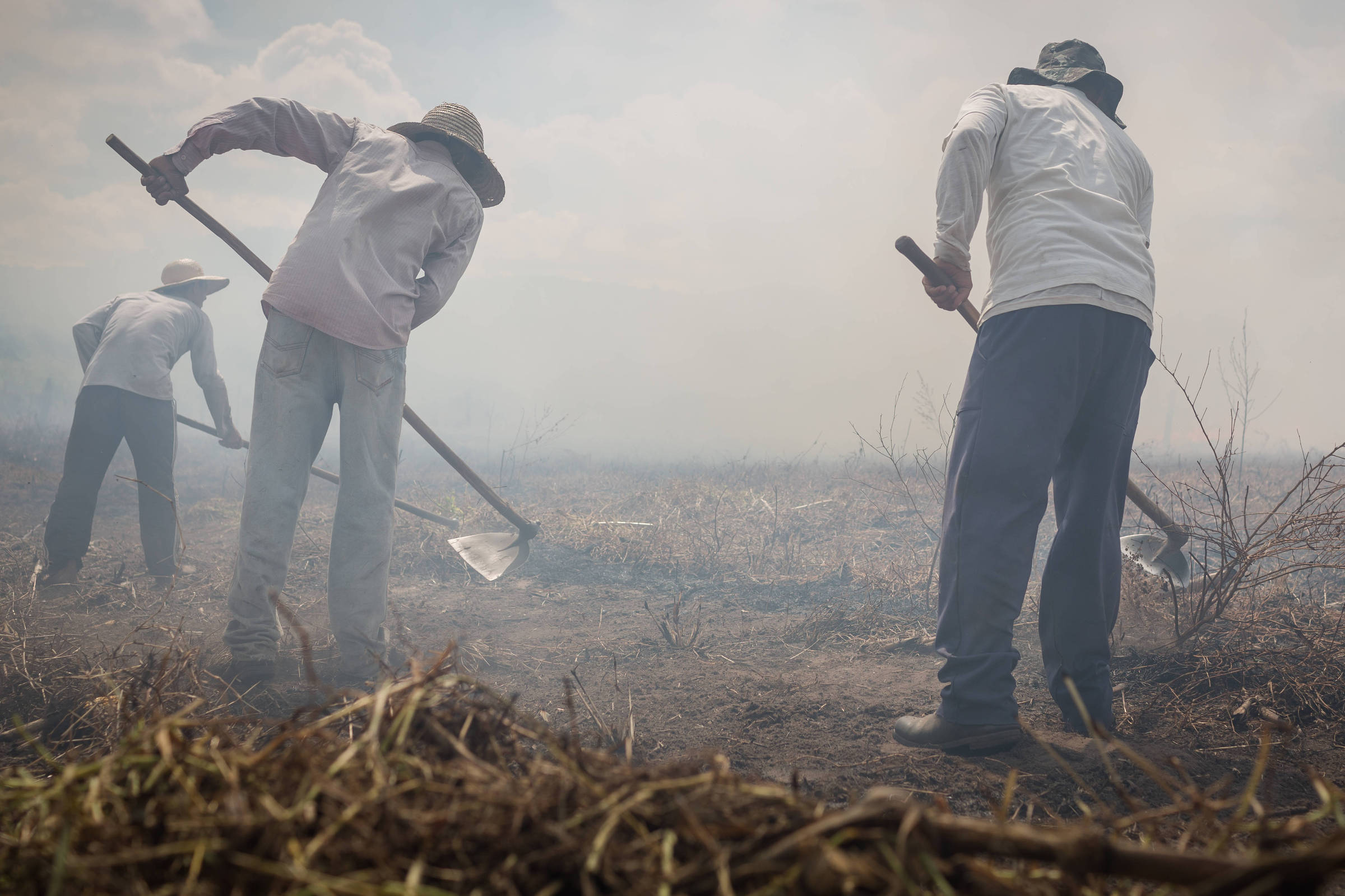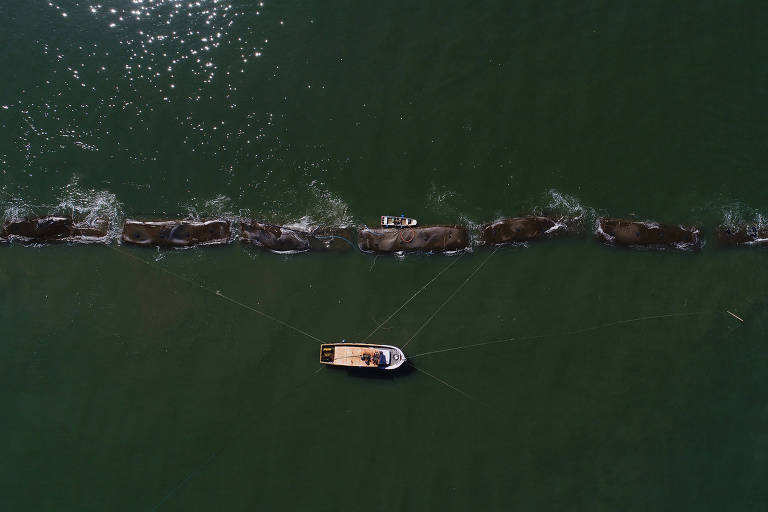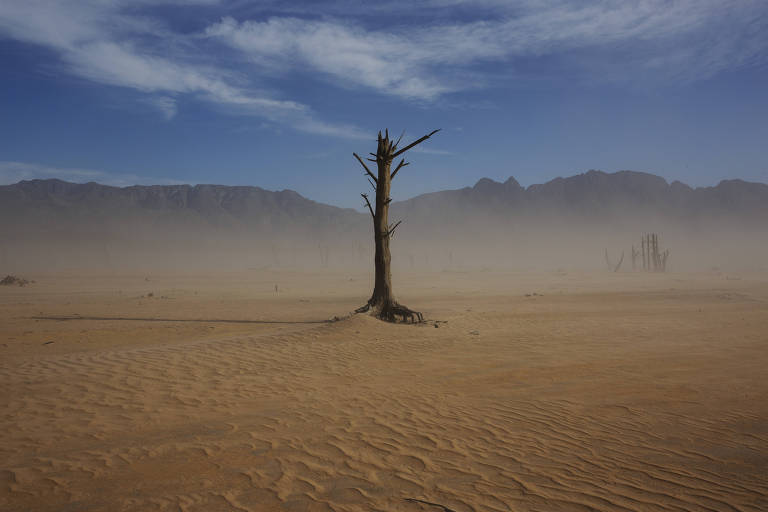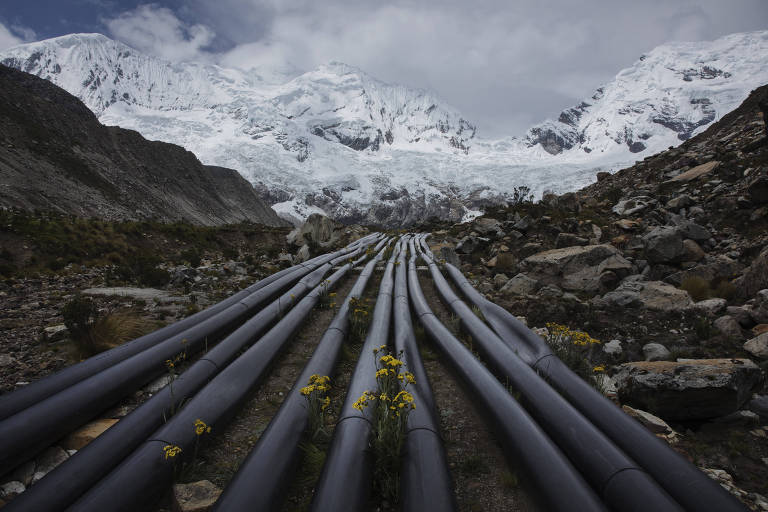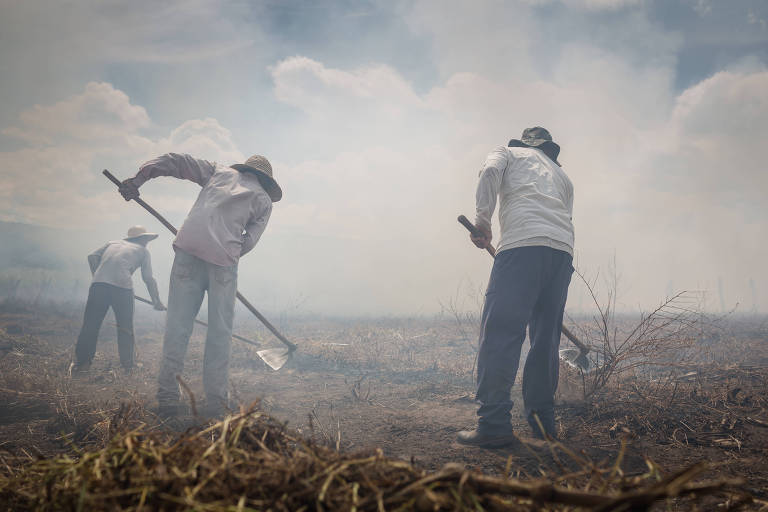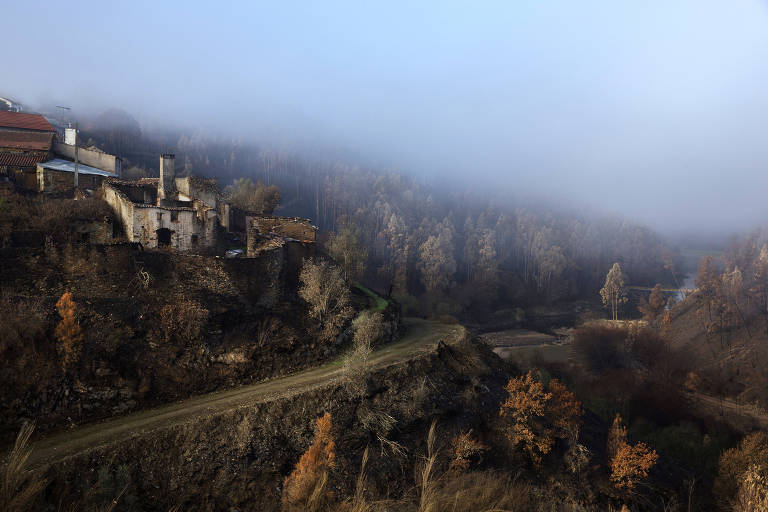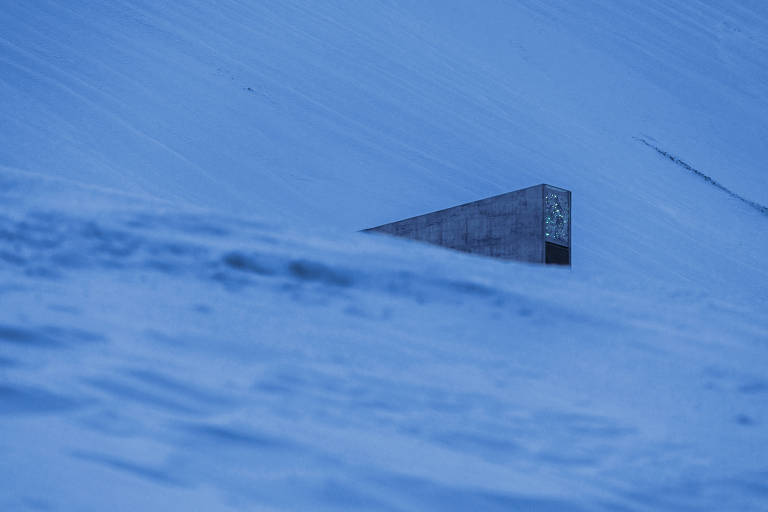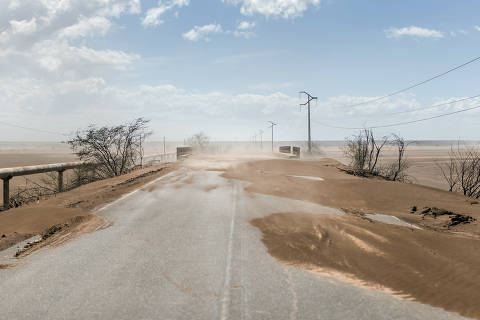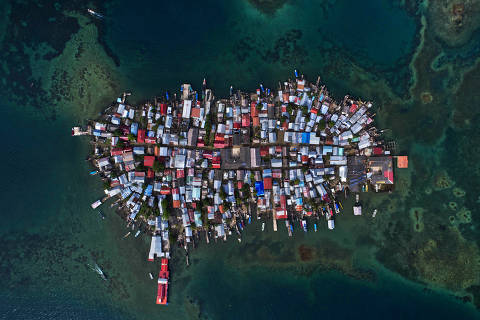Big agribusiness lends financial support to a climate skeptic whose speeches reach rural audiences in Matopiba
22.mai.2018 - 02h00
{{lang=1|por,//staging.arte.folha.com.br/ciencia/2018/crise-do-clima/cerrado/|esp,//arte.folha.uol.com.br/ciencia/2018/crisis-del-clima/cerrado/}}
Meteorologist Luiz Carlos Molion's remarks were met with a lengthy round of applause from the crowd of more than 400 soy producers in the heartland of Brazilian agribusiness.
"Global warming is a myth," said Molion, a climate change skeptic, in October of last year. "Temperatures around the world are not rising. We're witnessing cycles of warming and cooling that have always existed." The talk was sponsored by Agrosul, a multinational John Deere farm equipment dealer, fertilizer manufacturer Fertilaqua and the Bahia Foundation, a research group funded by farmers in the state of Bahia.
"CO2 does not contribute to a greenhouse effect and human action is too insignificant to have any effect on the climate," Molion said to a tractor-decorated auditorium in the city of Luís Eduardo Magalhães, the center of soy production in western Bahia.
{{imagem=1}}
Luís Eduardo Magalhães is located in Matopiba, part of Brazil's tropical savanna region, known as the cerrado. It is also Brazil's newest agricultural frontier, spanning the states of Maranhão, Tocantins, Piauí and Bahia (and hence the name, Ma-to-pi-ba), and home to most of the remaining unexplored land in the country. Molion's ideas are repeated as mantra by the rural farmers here.
The retired researcher delivers about 50 lectures per year across a number of Brazilian states and is contracted by such companies as Syngenta and Casa do Adubo (House of Fertilizer), as well as by state and local governments and growers' associations. On May 16th, Molion was the keynote speaker at the Soy Sur international convention, sponsored by the Chicago Mercantile Exchange (CME Group) in Ciudad del Este, Paraguay.
In his talks, Molion prognosticates the climate trend for the upcoming harvest –and the outlook for the next ten years– while denouncing "the scientific untruth called global warming." "I show farmers that they are not to blame, that CO2 and methane have nothing to do with climate change, and that deforestation has no impact on the amount of rainfall," Molion told Folha de S.Paulo.
{{video=3}}
Molion, a physicist and retired researcher at the National Institute of Space Research (INPE), has little credibility in the academic world. "When someone says that the carbon dioxide molecule does not have an atmospheric greenhouse effect, that it does not absorb and re-emit thermal radiation, this is an anti-scientific faux pas tantamount to saying the Earth is flat," says meteorologist Carlos Nobre, president of the Brazilian Panel on Climate Change and a former researcher at INPE.
"It's ironic to see companies that depend so much on science for product development to be irresponsibly and unethically sponsoring pseudoscience, thinking only about the profits that the expansion of Brazil's agricultural frontier will bring them," he adds.
Carminha Maria Missio, president of the Rural Farmers Union of Luís Eduardo Magalhães, represents more than 1,400 farmers and close to five million acres of farmland –an area equivalent to the entire Brazilian state of Sergipe. Missio claims that there is no proof that the Earth is warming, and that humans have nothing to do with it.
"No one knows what is fact and what is opinion. What happened to the dinosaurs?", she asks. "Was it deforestation?" Missio says that the region had four years of drought from 2012 to 2016 and now things are returning to "normal."
Scientific studies, however, indicate quite the opposite.
{{info=1}}
According to a study led by Ludmila Rattis of the Woods Hole Research Center and the Amazon Environmental Research Institute (IPAM), average temperatures in the region comprising Luís Eduardo Magalhães and Barreiras rose between 0.7ºC and 0.8ºC (1.3 and 1.4 degrees Fahrenheit) between 1901 and 2015.
Rattis analyzed data from the University of East Anglia's Climate Research Unit and determined that there was a rise of up to 2ºC (3.6 degrees Fahrenheit) in some areas of the cerrado, including in the south of Goiás state. She stresses that the study merely demonstrates that there has been an increase in temperature and does not make a determination as to whether these changes are human-induced.
Rainfall patterns have also changed. In research conducted for a master's thesis at the University of Brasília, biologist Juliana Oliveira Campos found that the amount of precipitation in the cerrado shrank by 8.4 percent from 1977 to 2010. In the state of Goiás, the southernmost part of this regional ecosystem, rainfall dropped by 10.6 percent; precipitation in the Matopiba region in the northern cerrado fell by 4.7 percent.
"We believe the reason the drop was less precipitous in Matopiba is because deforestation is less pronounced –and more recent– in that area," says Campos. The removal of trees to make way for pastures and crops in the cerrado has led to lower rates of evapotranspiration (the transfer of water from the ground into the atmosphere through evaporation and from the plants into the air through transpiration) which, in turn, has meant less rain.
{{video=1}}
Marcos Heil Costa, a professor of climatology at the Federal University of Viçosa (UFV) and coordinator of a study on the water potential of western Bahia, says the drought experienced in recent years is not part of a natural cycle.
"The drought is much longer than what is typical," he observes. "It's now entering its sixth year. Instead of the rains returning in some areas in 2017, they've started quite late in the season. The IPCC [Intergovernmental Panel on Climate Change, a body created by the United Nations and the World Weather Organization] is predicting an expansion of Brazil's semi-arid region into the cerrado."
Brazil's farming and livestock sector is the principal producer of the gas emissions that exacerbate the greenhouse effect and result in elevated average global temperatures.
{{info=2}}
Brazil's National Emissions Registry System reports that 33 percent of the gasses come from the energy sector, primarily from the burning of fossil fuels. In second place, at 31 percent of greenhouse gas emissions, is farming and livestock –from the use of fertilizers (which produce and release nitrous oxide), methane gas expelled from cattle, and emissions produced by farming machinery and agricultural transportation.
Third place in Brazil's official emissions tally goes to deforestation, which is responsible for 24 percent of the greenhouse gases expelled into the atmosphere. Because forests are clear cut in order to open up land for agriculture and ranching, the end result is that these industries account for 55 percent of Brazil's carbon emissions.
Matopiba makes up the largest area of cultivatable land still available in the country. This is largely due to the fact that the area's conversion to agriculture came much later than other regions in Brazil. The Southwest, for example, began to be converted for farming centuries ago, while the Amazon saw significant agricultural development during the 1970s.
{{imagem=5}}
{{imagem=6}}
The cerrado began to be explored a mere 30 years ago, with the arrival of immigrants from Rio Grande do Sul, Paraná and Santa Catarina states. Because the acidic soil in the area makes it challenging to grow crops, settlers found bargain prices for the land.
André Guimarães, executive director of IPAM, says that farmers are now expanding agricultural and livestock activity to areas that are not economically viable, leading to over-irrigation and requiring excessive use of chemicals to correct soil pH levels.
"We are not against agricultural production and cattle raising," Guimarães says, "but we need to impose some order to the farming occupation of Matopiba. Instead of expanding into areas that are not economically viable, we need to be preserving them."
While they don't believe the climate changes are here to stay, many farmers have already adapted to a drier and hotter reality. 30-year-old Pedro Cappellesso and his family have a 2,500-acre farm on which they produce 70,000 bags of soy per year –enough to fill more than a hundred eighteen-wheelers.
Like most producers in the region, Cappellesso uses soil preservation techniques, like rotating crops and no-till farming. With the no-till system, the earth doesn't remain bare and is not subject to erosion and runoff. Instead, farmers cover the ground with straw and other crop residues from sorghum, corn, brachiaria grass and millet. The soil is not plowed prior to planting.
The practice reduces soil erosion while conserving fuel, seed and fertilizer costs. It also cuts down on emissions. Cappellesso now uses sorghum for crop rotation. "We don't plant corn anymore because it requires much more water and we understand that the river is becoming a problem," he says.
{{imagem=2}}
Successive droughts in the region, along with poorly-organized concessions of irrigation grants, have reduced the flow of some rivers. The use of water can mean a marked difference in productivity. For example, soybean cultivation without irrigation yields 60 bags per hectare; with water, the yield rises to between 80 and 85 bags.
"The situation in the northern cerrado is critical," says Mercedes Bustamante, of the University of Brasilia's department of ecology. "If the drought continues, agriculture in the region will become economically unviable."
Higher temperatures, together with decreased river flow and larger properties, have spurred conflicts over water use and strained relationships between landowners.
The Correntina region in the state of Bahia was the stage for a revolt in November 2017 when nearly a thousand small farmers occupied the Igarashi Ranch and destroyed property there. The farmers blamed the larger ranch for the reduced flow of the Arrojado River, which has been threatening the agricultural viability of surrounding river communities.
The small farmers use traditional irrigation systems like furrow irrigation and the water wheel, both of which suffer when the river's flow is reduced. Igarashi is up and running again but local leaders say they will occupy the ranch a second time if the river levels drop once more.
{{info=3}}
"Last year, the water that came by the furrow disappeared," said Adolfo Batista de Oliveira. "We had to stay up all night taking turns sprinkling water to keep the ground wet. It was really sad. The corn, the beans, everything ended up dying," he said. The 55-year-old farmer is now planting two-and-a-half acres of corn, potatoes and beans to feed his family of six.
"The water crisis is obvious," says Luciana Khoury, a district attorney in charge of environmental affairs. "Everyone's noticed the reduction in the river flow." According to Khoury, the problem is that there is no plan for the river basin, which would establish safe amounts that can be drawn from the rivers and from the Urucuia Aquifer without upsetting the water security of the region.
In December 2017, Khoury asked that all river water catchment allocations be suspended until a water basin plan could be established. The state government denied her request.
{{imagem=3}}
Marcos Costa, the climatology professor, says that the data indicate a moderate reduction of flow in area rivers. But he argues that the lower levels are the result of sustained drought conditions and not because of more water being withdrawn for irrigation use.
Costa argues that water catchment allocations are granted based on outdated information. "For example," he says, "they don't take into consideration what effect the increase in the number of wells has had on underground water sources, such as the Urucuia Aquifer."
Mercedes Bustamante points out that agribusiness is not a monolithic block. "There's a sizable amount of large agricultural producers who are environmentally conscious and who practice sustainable, innovative farming using high technology," she says.
"They're using soil conservation methods, reducing the use of fertilizers. On top of being ecologically sound, it's less of an economic risk," she adds.
For climatologist Carlos Nobre, agriculture will commit "suicide, if it doesn't adapt to the changes in climate that are already occurring and will continue to occur into the future," he warns. "Like, for example, extreme climactic events such as drought, heat waves and all of the damage they bring."
When asked for comment by Folha de S.Paulo, companies that have sponsored Molion's talks responded that they do not subscribe to his viewpoints, adding that they are committed to actions that reduce the impact of climate change. Fertilaqua says that it sponsors the climate change skeptic because of his solid reputation for weather forecasting and the fact that he is an in-demand speaker –not because of his campaign against the idea of global warming.
Syngenta, for its part, insists that its deal with Molion came about because of his extensive knowledge of coffee cultivation and his climate prediction system. "This vision [the denial of climate change] doesn't align with that of Syngenta," the firm responded in a statement.
John Deere says that any declarations made by speakers at events affiliated with the company are personal opinions and do not represent the position of John Deere. The multinational also said that it recognizes climate change as a real phenomenon and is committed to sustainable agriculture.
{{imagem=7}}
{{imagem=8}}
Casa do Adubo, a network of agricultural supply stores, stated that it hired the speaker because his weather forecasts are accurate, but also because of his criticisms of global warming.
Molion says companies hire him as a draw because they know his talks are popular.
"He's right about his drought forecasts, he shows that global warming doesn't exist and that everything is not the fault of the farmer, says Alexandre Moreira Maciel, a 41-year-old banana and mango grower in the Barreiras region of Bahia.
"We really like his scientific assessments," says Nilson Vicente, executive director of the Bahia Foundation. "In 2010 he predicted the drought that we had in 2012. If global warming really existed, coffee would have already been affected, as it's extremely sensitive to temperature."
Other scientists in the region share Molion's views, including Ricardo Reis Alves, a geography professor at the Federal University of Western Bahia, who is regularly consulted by the Bahia Association of Farmers and Irrigators.
Al Gore's film should have been called "A Convenient Lie," not "An Inconvenient Truth," says 59-year-old agronomist Valmor dos Santos. "They're just foreign interests trying to undermine our agriculture, the most productive in the world."
{{imagem=4}}
